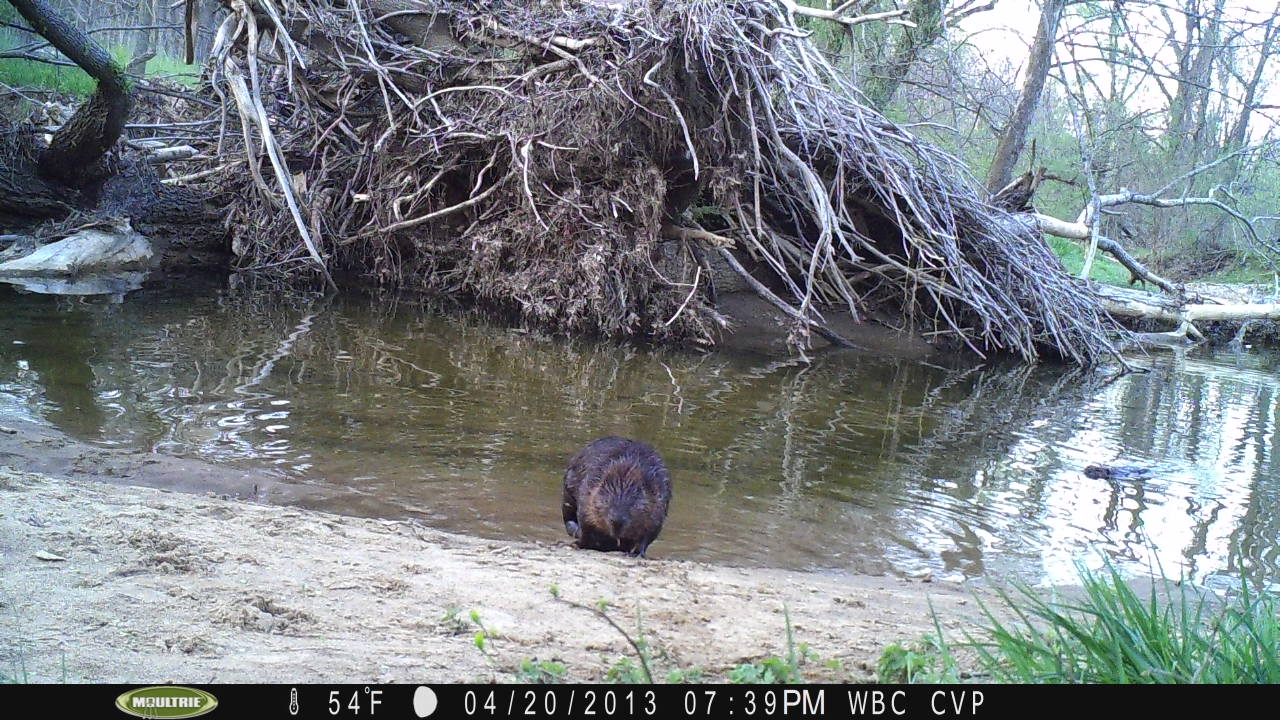 |
| the dam. 9 April 2013. |
I checked the beaver today, and discovered that the tree is still standing.
I decided to keep the camera looking at the tree, as I think it might be fun to capture its fall on camera.
(Wish me luck with that, please.)
As you can see, the beaver is still working on the tree.
While poking around the area, I noticed some other interesting things. From an earlier entry, you may recall that the beaver cut down a tree, but that the tree got hung up in vines and didn't fall to the ground. Today, I noticed that our rodent friend has cut through the vine, allowing the tree to drop to the ground.
 |
| the tree, on the ground and limbed by the beaver. |
 |
The vine the beaver cut to free the tree.
|
How's that for problem solving?
I also noticed an art installation in Minebank Run. It is unsigned.
Courtesy of North Carolina State University, I leave you with a list of Beaver Pond Benefits
Active Ponds
- Improve downstream water quality
- Provide watering holes for agricultural and wildlife needs
- Supply important breeding areas for amphibians and fish
- Provide diverse wetland habitats
- Furnish feeding, brood rearing and resting areas for waterfowl
- Encourage many reptile, bat amphibian, fish and bird species
Abandoned Ponds
- Furnish snags for cavity-nesters and insectivores
- Fallen logs supply cover for reptiles and amphibians
- Provide essential edges and forest openings
- Supply diverse moist-soil habitats within bottomland forests
- Create productive bottomland forests
- Provide foraging and nesting areas for bats, songbirds, owls, and hawks
http://www.ces.ncsu.edu/forestry/pdf/www/www23.pdf
More later.












